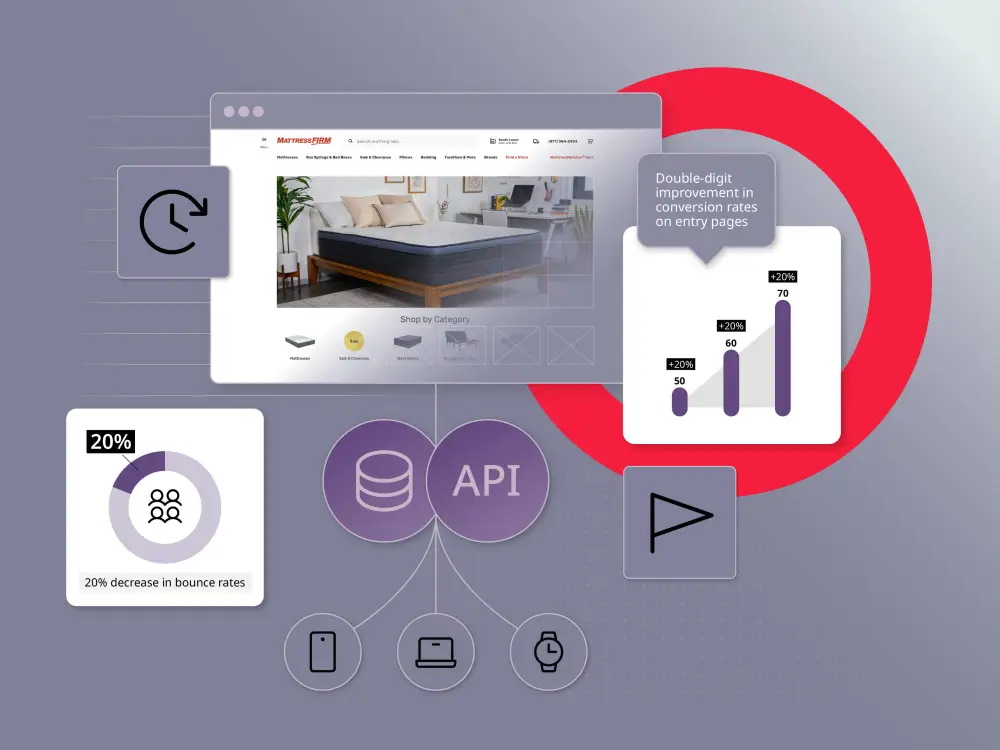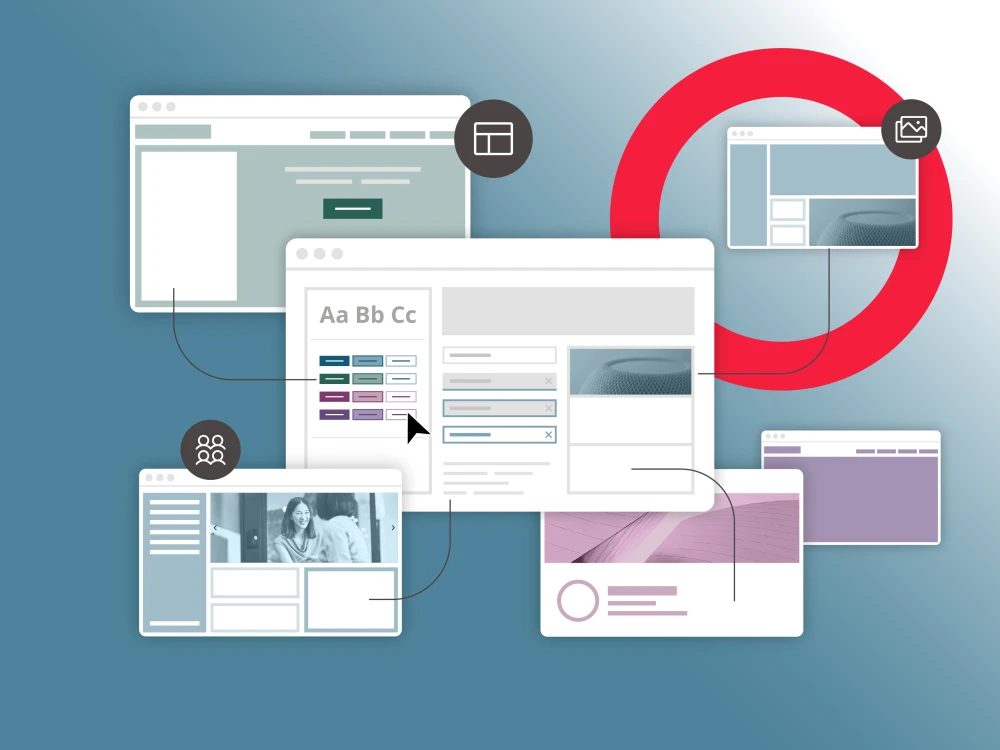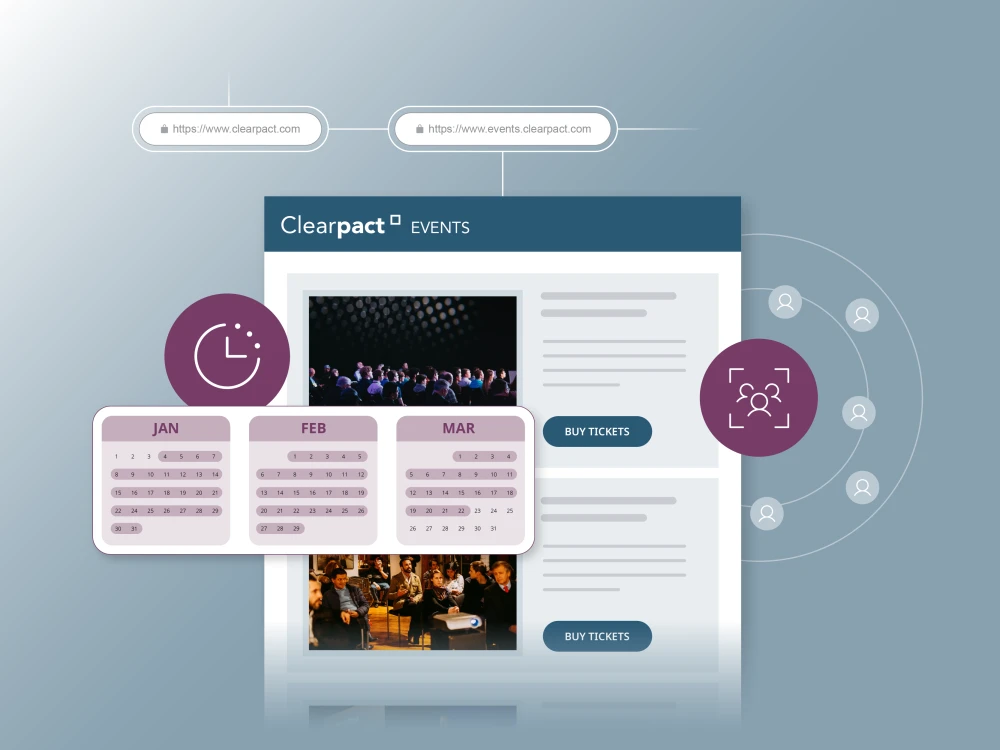Microsites empower marketers to experiment with engaging, differentiated experiences for a single purpose. No matter what company or which industry you fall into, microsites can help you deliver on your specific marketing objectives, while also providing additional value to your customers.
At Brightspot, we’ve seen firsthand how they can expand an organization’s capabilities, increase awareness and target new audiences. Storied organizations such as Special Olympics use microsites each and every day to help further their initiatives and foster deep and lasting emotional brand connections. And we predict that this trend is only going to grow in the coming year, with more and more companies reaping the benefits of microsites.
Once you understand what microsites are and the benefits associated with them, it’s important to know how to harness their mighty power. Here are some best practices to get the most out of your microsites this year.
Identify your audience
With a microsite, you gain the creative freedom to explore new ways to engage your audiences. When planning your microsite, consider who you are trying to reach and what you want them to take away from the experience. Your audience will benefit from an intuitive interface and personalized content, both of which will create memorable interactions with your brand.
Remember, microsites also provide a great opportunity for experimentation. Deviate from the look and feel of your main website, or get playful with a different brand voice and test the response. That’s the beauty of a microsite—finding new, unexpected ways for people to engage with your brand without impacting your primary website.
While microsites give you the ability to focus on more niche audiences and topics, due diligence is required. Mapping out niche personas is an important first step when creating a promotional strategy, as your microsite target audience can differ greatly from your core one.
Promote your microsite
It’s not just about creating and launching your microsite; promotion is crucial. SEO is powerful, but it can’t do much of the heavy lifting for sites that may only be around a short period of time. Having a promotional strategy and budget to invest in driving engagement can make or break the success of a campaign.
Consider promoting your microsite on social media, through paid promotion and advertising, PR, email blasts, inbound links from your core domain, and other avenues that make sense for your brand. Actively spreading the word about your microsite is one of the simplest and most effective ways to maximize the effectiveness of your campaign.
Leverage SEO correctly
Microsites, like any other type of digital content, have SEO implications. Here are a few of the SEO benefits you get from a microsite:
- You can use a different voice. If your brand owns or finances other content sites, microsites allow you to use a different voice (with different terms) to attract more visitors without creating dissonance.
- You can cover niche topics. Having specific keywords in URLs is important to SEO rankings. The traditional thought is that this helps users and crawlers understand the navigation of your site and what a specific page is about. With a subdomain microsite, you can cover more specific niche topics and long-tail keywords that may otherwise get lost within your core website.
However, there are some potential SEO pitfalls you should consider when using microsites—especially if you’re starting from scratch and building a new domain. It’s important to be aware that:
- Your linking authority is not consolidated to your main domain. You may not be able to link to other sites immediately, requiring you to pay to drive traffic for a while.
- You have to change analytics settings. A subdomain in main analytics programs usually appears as referral traffic by default. You’ll want to tweak that to make sure referrals count as overall sessions.
- You confront duplicate content issues. You’ll have to get strategic about keyword governance. If you repurpose content from your main site, you’ll need to change it considerably so Google doesn’t flag the microsite as duplicate content and filter it from search results.
Measure your success
Your microsite project should always start with the end in mind. Before you launch your microsite, it’s important to have a specific goal. The clearer your objective, the more you can strip away unnecessary information on your site and give visitors exactly what they’re looking for. Without any noise, you can deliver an experience that drives engagement and encourages people to take action.
Because a microsite is tied to a specific campaign with a discrete objective, what you’re tracking should align to these goals. Here are some metrics you may want to track, depending on your use case:
- Conversions/form completions
- Number of visitors
- Unique visits compared to core site
- Time on site
- Bounce rate
- Penetration to key segments that aren’t part of core site
- Brand equity traction
Make sure to run split tests over the course of your campaign. These types of tests can provide you with a wealth of competitive insights. This is particularly important if the primary purpose of your microsite is to better understand a specific segment of your core audience.
Move to a modern CMS
If you want to realize the full potential of microsites with the least amount of effort, you need to start with a modern CMS, which allows you to bypass the obstacles you’re bound to encounter on a legacy platform.
A legacy CMS lacks the functionality and capabilities needed for easy, fast microsites. Here are just a few ways your experience vastly differs with a legacy vs. next-gen CMS:
| Legacy CMS | Modern CMS | |
| Front-end control | You frequently need help from IT for things as simple as a headline change. | You hold the power to make any changes quickly and easily. |
Multisite Support | You must juggle separate platforms for controlling each site. | Save major time and money by managing all sites or microsites in one place. |
Speed | Setting up a new site takes months. | Setting up a new site takes days or weeks |
The Brightspot difference
Brightspot CMS redefines expectations for speed and flexibility in a content management system, making it possible to launch an enterprise site in less than 90 days. With marketing-leading features, an intuitive user interface and a seamless editorial experience, the Brightspot CMS is a powerful engine for any microsite. Benefits of the platform include:
- Rapid site launch. Start, finish and customize microsites quickly with a ready-made toolkit.
- Front-end customization. Create unique experiences on your microsite using the thousands of content types and front-end capabilities available OOTB with Brightspot.
- Configurable components. Alter pages and features quickly and easily with Brightspot’s intuitive dashboard and streamlined UI that make it possible for users to publish with less than 10 minutes of training.
- Rapid migration. Accelerate and ease the migration path, enabling users to launch high-end enterprise properties in weeks instead of months.
- Platform flexibility: With Brightspot, your business needs dictate the solution, not the other way round. So whether it’s a headless CMS option you need, decoupled or a combination of both, you choose the approach and can change in the future.
Find out how a Brightspot microsite could make all the difference for your business. Request your Brightspot demo today.










